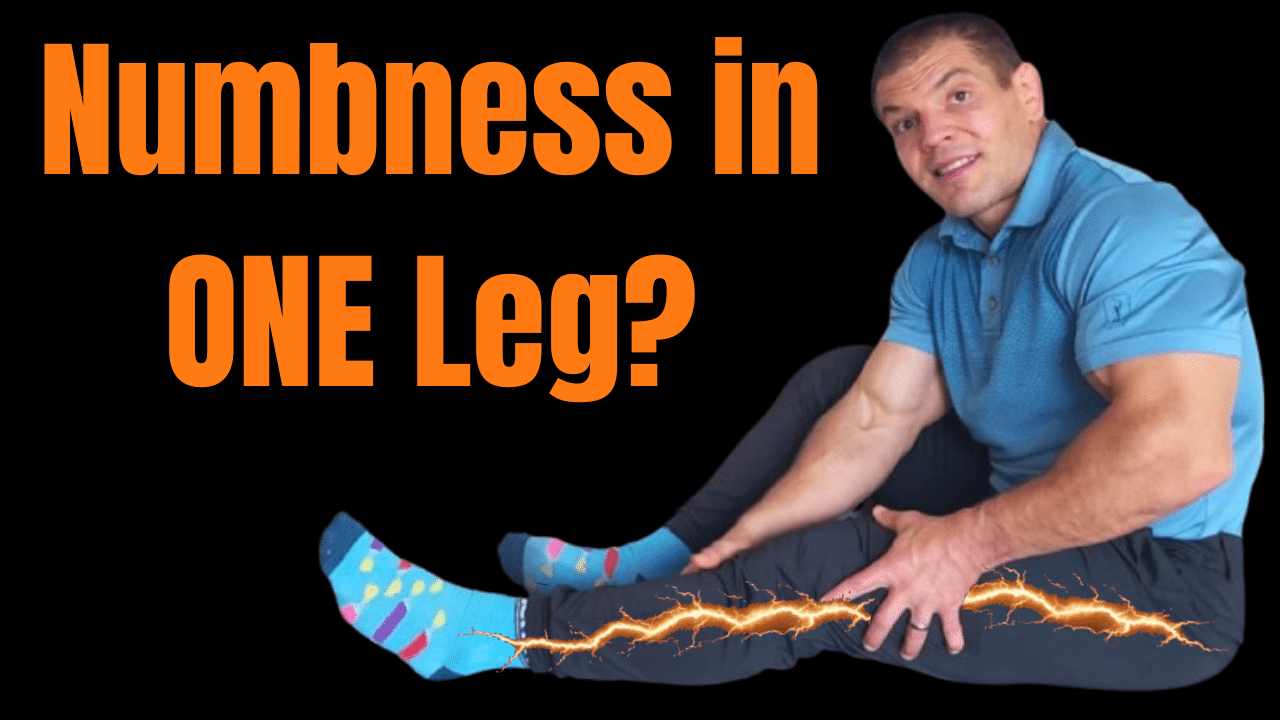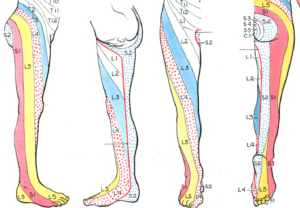If you have numbness and tingling in one leg, don’t ignore it. While it can come from many causes, the most common reason is a pinched nerve in your lower back. Understanding what’s behind your symptoms can help you find relief faster and avoid unnecessary treatments.
Watch this video to learn causes of numbness and tingling in one leg, plus simple solutions you can try at home.
Table of Contents
- Common Causes of Numbness and Tingling
- Nerve Root Distributions in the Leg
- Diagnosing Pinched Nerves: MRI and Clinical Findings
- Herniated Discs: Symptoms and Relief
- Spinal Stenosis and Foraminal Stenosis
- Treatments for Pinched Nerves
- Office Ergonomics and Lumbar Support
- Sciatic Nerve and Piriformis Syndrome
- Fibular Nerve Compression at the Knee
- Final Thoughts
Common Causes of Numbness and Tingling
There are many causes of leg numbness and tingling, including diabetes, poor circulation, vitamin deficiencies, or central nervous system disorders. But when symptoms affect only one leg, the most likely cause is a pinched nerve in your lower back.
Nerve Root Distributions in the Leg
Each nerve root in your spine sends sensation to a specific area of your leg:
- L1–L3: groin and front of thigh
- L4: inner knee and inner leg
- L5: outer leg, shin, and top of the foot
- S1: back of the leg, calf, and outer foot
Knowing where your tingling or numbness occurs can help identify the pinched nerve root.
Diagnosing Pinched Nerves: MRI and Clinical Findings
MRIs can show disc herniations or nerve compression, but they don’t always match your symptoms. A scan may show a disc problem on one side, while your pain is on the other.
That’s why doctors and physical therapists compare imaging with your actual symptoms before recommending treatment. (Or at least they should!)
Herniated Discs: Symptoms and Relief
A herniated disc is common between ages 30–50. Symptoms often worsen with sitting, bending forward, coughing, or sneezing. Relief usually comes with standing or walking. Extension-based exercises like press-ups (cobra stretch) can reduce symptoms if they feel better as you do them.
Spinal Stenosis and Foraminal Stenosis
In adults over 50, discs naturally dry out and shrink, which can pinch nerves. This is called spinal stenosis. Central stenosis often affects both legs, while foraminal stenosis usually affects just one side. Bending forward often eases the symptoms of stenosis, while bending backward makes them worse.
Treatments for Pinched Nerves
The right treatment depends on the cause. Herniated discs often improve with back extension exercises, while stenosis responds better to forward bending. A physical therapist can guide you to the safest exercises for your situation.
Office Ergonomics and Lumbar Support
Prolonged sitting often makes numbness in one leg worse. Using a chair with good lumbar support helps.
One that I like is the OdinLake L1 Ergonomic Chair (use code davecandy for 5% off).
You can also roll up a towel and place it behind your lower back for support.
Sciatic Nerve and Piriformis Syndrome
Sometimes numbness and tingling in one leg comes from the sciatic nerve being irritated in the buttock by the piriformis muscle.
This is less common than back-related sciatica but worth considering if sitting on hard chairs worsens your symptoms.
Stretching or strengthening the piriformis can help, depending on whether it’s too tight or weak.
Fibular Nerve Compression at the Knee
The sciatic nerve splits at the knee. The fibular branch can become compressed near the fibular head (outside of the knee). This often causes numbness from the knee down, especially along the outer shin and foot. Gentle mobilization exercises can sometimes help relieve pressure on this nerve. Watch the video at the top of this page to learn how to do those techniques.
Final Thoughts
The three most common causes of numbness and tingling in one leg are pinched nerves in the lower back, piriformis syndrome, and fibular nerve compression.
However, circulation issues like blood clots can also cause symptoms. Always check with your doctor to rule out serious causes.
Need More Help To Relieve Sciatica?
If you'd like more help to relieve sciatica, check out my book: The Over 50 Sciatica Solution.
Inside, you'll find:
- Clear explanations of sciatica for people over 50
- A do-it-yourself assessment to better understand your symptoms
- Natural relief strategies beyond just exercises




